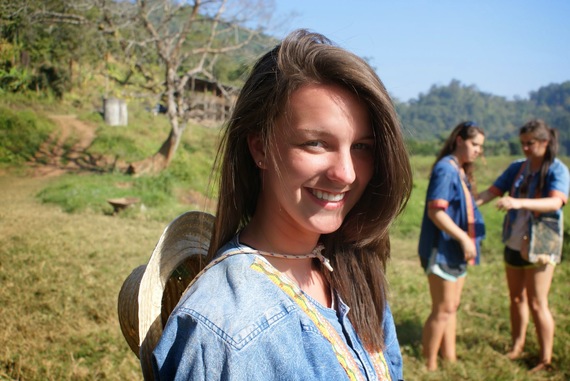A meaningful study abroad experience requires something foreign to most classroom learning, a more radical pedagogy instructors initially tend to resist: get out the way and let the students learn. Environments are powerful teachers when students are given the freedom to tap directly into them.
Beginning with pre-school, most of us are trained to adopt a kind of "classroom presence". We submit to expectations of proper posture, behavior, gesticulation, tone, response-time and recognition of authority built into a regimen of learning intended to sustain and protect order. Learning occurs at a juncture somewhere between the student audience wall and a single illuminated surface performing in front of it, whether it be live and material, or delayed and virtual. Non-porous walls with little to distract help to funnel attention forward. Thirteen+ years after having imbibed these habits of body and mind, universities then invite students to go abroad and experience something transformative in a foreign land.
Taking for granted that the performance of the conditioned "classroom presence" will deliver such an experience is a gamble at best.
Being changed in a deep and meaningful way while studying abroad demands a different kind of presence, one awakened to--not dulled by--the environment, nor expectant of a single illuminated image delivering meaning ready-made. Students should be invited to cultivate a "travel presence" before embarking on their journeys.
Such a presence frees students up from the more controlled, linear modes of knowledge exchange in the classroom. They aren't meant to keep their mouths shut, eyes ahead or on their own paper, but encouraged to swivel their gaze and bodies on all three axes, 360-degrees. The world becomes their teacher, reducing their regular instructor to one of many voices--albeit still a crucial one--in the meaningful chorus of sounds singing to them. This "travel presence" is one of more open awareness, sensitive and responsive to the environment, and eager to learn from all directions and any number of sources.
I borrow the term "travel presence" from Frederic and Mary Ann Brussat's use of it in their article at mindful.org. The Brussats give advice on how to become more deeply connected to a place in the context of pilgrimage. When students are learning, serving and researching abroad, they usually are not doing so in the context of a spiritual journey. Nonetheless, the significance and heightened attention lent to religious pilgrimage is a good place to launch the transformative student experience. The following are initial musings on ways students can cultivate a "travel presence" by themselves that I believe leads to a more meaningful experience:
(1) Prepare. Not just logistical details, but personally. Before the journey, determine what your deeply meaningful goals are, the ones you hope will change you and that you'll carry with you forever. Do they speak to your emotional, intellectual, spiritual and creative needs? What materials or support will you need to realize them?
(2) Take time. Early morning, afternoon and evening should be punctuated by moments of stillness to adjust to new environments and to curiously observe and absorb one's surroundings. Our senses need that time to grow accustomed to, safely interact with, and then register the remarkable moments we experience in foreign places. Moving frenetically from site to site can cheat us of these moments to connect with what surrounds us and may disturb the gradual process of growing strong memories.
(3) Keep an open record. It's important to allow yourself the liberty to process in writing what you see and feel, and the thoughts that arise from new encounters with people, places and things. Writing goals shouldn't be so structured that they discourage random entries, brief insights, poetic scribbles or sketches.
(4) Follow the cat. Have a detailed itinerary, and be prepared to break it. Remember, you are in a foreign land. Your understanding and trajectory are necessarily limited--built to suit the foreigner. But amazing things happen on site. Be prepared to follow the cat down the alley and discover something that puts a new tint on your pretty plan.
(5) Engage all the senses. On a daily basis, arrange activities for yourself that challenge and tantalize the mind, the eyes, nose, ears, tongue and fingers. Rub a talisman between your fingers. Walk through a fish or meat market. Become accustomed to the sound of the Asian House Crow. Our guidebooks and textbooks can keep us buried under a mountain of words, comfortable and safe, perhaps, but also screened from all the information the environment is throwing at us second by second.
(6) Share the journey. Finally, tell someone all about it. Sharing your breakout from Plato's cave of images of the place you visited is not only a service to those closest to you, but it will help to define and enshrine the significance of your experience to yourself.



